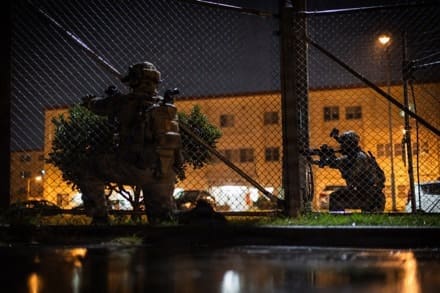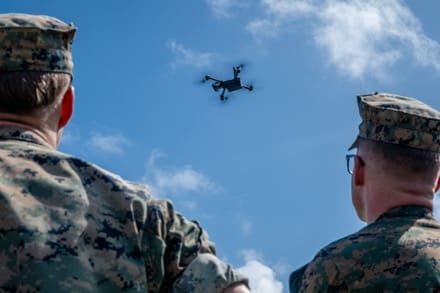
MARINE CORPS BASE HAWAII – The U.S. Marine Corps took a major step forward with a state-of-the-art system designed for short-range detection, tracking and engagement of aerial threats. On Dec. 12, 2025, Program Executive Office Land Systems fielded two Marine Air Defense Integrated Systems (MADIS) to 1st Low Altitude Air Defense (LAAD) Battalion, Marine Air Control Group 18, 1st Marine Aircraft Wing (MAW). The fielding of these systems marks a pivotal step in enhancing expeditionary defense capabilities within the Indo-Pacific region.
The MADIS consists of two Joint Light Tactical Vehicles (JLTVs), one focused on detection and the other oriented toward offensive action. Working together, they form a maneuverable ground-based air defense weapon system designed to defeat unmanned aircraft systems and manned fixed wing and rotary wing aircraft threats while on the move and at the halt.
The full-rate production configuration of the MADIS employs a powerful combination of 30mm cannons, Stinger missiles and multifunctional electronic warfare equipment. The 360-degree threat detection and protection allow the system to simultaneously engage and neutralize threats with both kinetic and non-kinetic forces.
“These systems will increase capabilities of counter-unmanned aircraft systems operations and provide automatic target recognition and weapon assignment to decrease engagement times and reduce the cognitive load on the Marine operator,” said Lt. Col. Mike Billings, product manager for Future Weapons Systems at PM Ground Based Air Defense. “The next step is to deliver the full rate production MADIS to all low altitude air defense battalions and littoral anti-air battalions across the Marine Corps, at a rapid rate.”
Since the reactivation of 1st LAAD Battalion in 2023, the unit has consistently advanced the U.S. Marine Corps’ force design initiatives. Key milestones include the activation of Firing Battery Alpha in August 2024 and Firing Battery Mike in December 2025. Most notably, the successful fielding of MADIS units, today, marks a pivotal step forward.
“Owning these systems gives us direct control capability,” said Master Gunnery Sgt. Mario Guadarrama, battalion operations chief for 1st LAAD Battalion. “Reducing the gap between training and combat employment allows seamless integration with partners and allies throughout the Indo-Pacific region.”
Fielding the MADIS directly to 1st LAAD Battalion significantly enhances expeditionary ground-based air defense capabilities in support of 1st MAW. The primary mission of 1st LAAD Battalion is to provide close-in, low-altitude, surface-to-air weapon capabilities, and the MADIS is a strategic step forward for the battalion.
Story by 2nd Lt. Joseph Adcock, 1st Marine Aircraft Wing






























































































































